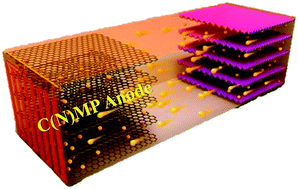Enhanced performance of Mo2P monolayer as lithium-ion battery anode materials by carbon and nitrogen doping: a first principles study†
Abstract
By means of density functional theory (DFT) computations, we explored the potential of carbon- and nitrogen-doped Mo2P (CMP and NMP) layered materials as the representative of transition metal phosphides (TMPs) for the development of lithium-ion battery (LIB) anode materials, paying special attention to the synergistic effects of the dopants. Both CMP and NMP have exceptional stabilities and excellent electronic conductivity, and a high theoretical maximum storage capacity of ∼ 486 mA h g−1. Li-ion diffusion barriers on the two-dimensional (2D) CMP and NMP surfaces are extremely low (∼0.036 eV), and it is expected that on these 2D layers Li can diffuse 104 times faster than that on MoS2 and graphene at room temperature, and both monolayers have relatively low average open-circuit voltage (0.38 and 0.4 eV). All these exceptional properties make CMP and NMP monolayers as promising candidates for high-performance LIB anode materials, which also demonstrates that simple doping is an effective strategy to enhance the performance of anode materials in rechargeable batteries.



 Please wait while we load your content...
Please wait while we load your content...